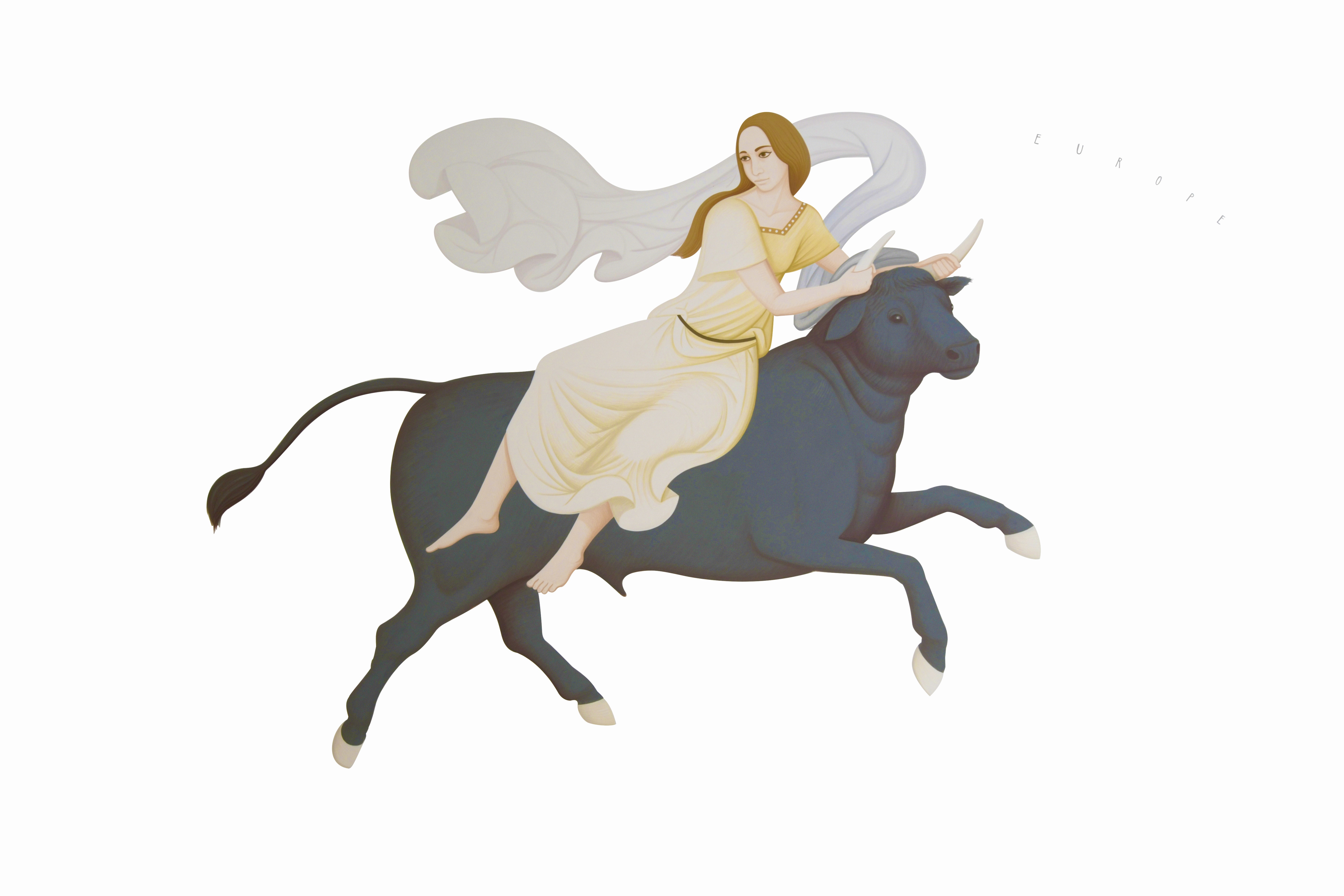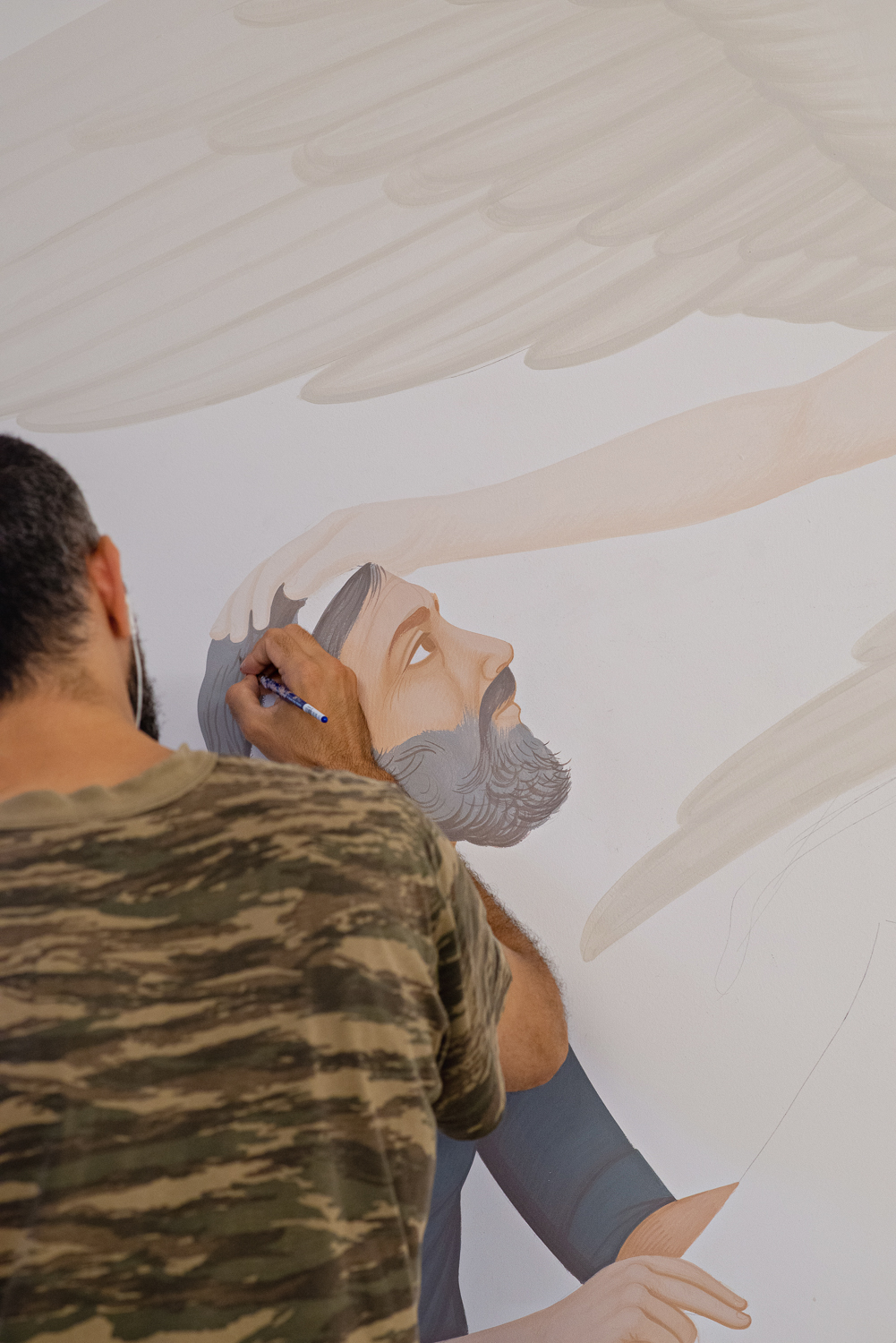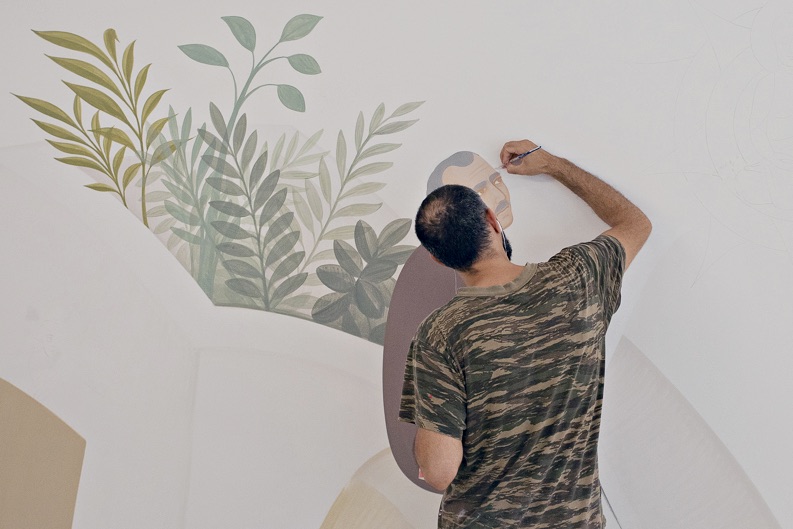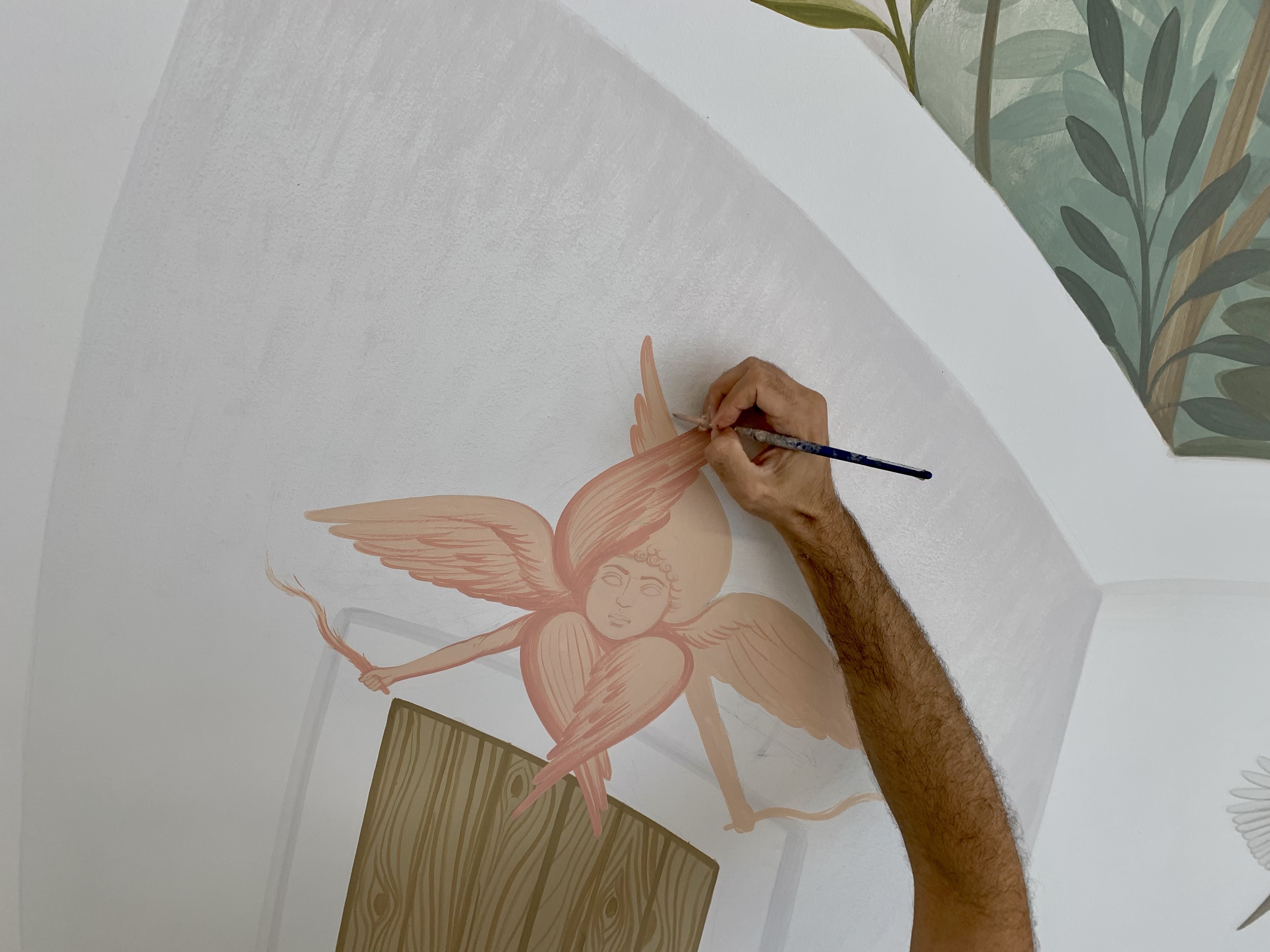
The mural
From the very first moment you step your foot at PAVO, you will admire the murals that the well-known Greek artist Fikos has made especially for you. His unique “Contemporary Byzantine” style strikes the perfect balance between tradition and modernity.
The mural depicts parts of the rich Cretan history, mythology and culture over the centuries, from the Minoan era to the birth of Zeus and the abduction of Europe, and then to some of the most renowned representatives of its culture, El Greco, Vincenzo Κornaros, and Nikos Kazantzakis.
Fikos shares some thoughts on his journey, society, art and the work he created for PAVO.

How did your journey in the arts start?
As a kid, Ι was drawing comics and christian saints and doing craftworks like embroidery, rosaries and cast wax icons. Later, at 12 yo I started my occupation with graffiti, and one year later my studies in Byzantine painting.
What does the term "Contemporary Byzantine Painting" represents?
I invented this term 10 years ago out of need, as a quick response to people’s question “In what style do you paint?”. See, the problem until then, was that when I was simply replying “Byzantine painting” they would come back with “ah, Byzantine icons”. Then I had to explain that it was not icons, but secular painting based on the Byzantine style. So I added “Contemporary” to distinct my art from the religious art of Byzantium .
Graffiti, street art and murals: are they similar or different at the end of the day?
In the literally sense, these are all “Street Art” - they are forms of "art in the street". I believe the difference lies in the intentions and goals of each genre. Graffiti is mostly related with the ego of the artist (this is how it was initially started in New York by the Greek Taki183-writing his name everywhere was something "he just had to do", as he stated 50 years ago). Street Art seems more "artistic", but again, besides the political and social reaction aspect, it is mainly a medium of self-expression and self-promotion. That's why most street artists are trying to find a signature element (like the use of 1-2 specific colors) that they repeat everywhere they go and in every surface and occasion they create. Muralism is an ancient art form that has completely different features. It prefers collectivity over individuality, timeless over ephemeral, organic relation and respect over vandalism.

What do you think is the most challenging part of creating an artwork at such a large scale?
When we talk about large scale murals we should make a distinction between high murals and long murals. High murals can be quite huge in size and the challenges can be the proportions, managing the colors and shades etc., but they have an "easy" part: they usually depict one “autonomous” theme. Long murals bear the challenge of the multiplicity of the scenes. In a complex composition like the one we realized in PAVO, the artist has to bear in mind the narrative continuity, the color harmony, the rhythm and unity of the composition as a whole, the economy of the space in relation with the given themes, so basically, all the challenges that an artist would have faced in the frieze of the Parthenon or in any other Ancient Greek temple.
In your murals you often choose to depict social and didactic themes, such as the #metoo movement, etc. Can you tell us more about art as activism? Do you think artists have the moral obligation to change the world through art?
Definitely not. I would prefer the old status of artists as craftsmen who work for the society rather the post-modern conception of the artist as a special, “enlightened” person who can awake, teach, change the world. Ideally, all members of a society should be active citizens, therefore, artists as well, but the latter are definitely not "more responsible" or "morally obligated" to share their opinions with the rest of the society in a form of indoctrination (especially through public art), for the simplest reason that, like any other person’s, the artist’s beliefs could be wrong.

In the PAVO mural you illustrate important historical personalities of Crete. Which one affected you the most?
To me, El Greco is the most bright artistic genious of all time, but the personality I feel the biggest affiliation is Kazantzakis, though I wouldn’t say he affected me. I started reading his writings in an age that I had already shaped an opinion about the world, human relations, religion etc., so I was quite impressed to find most of my beliefs in his work.
What fascinates you most about Cretan history and culture?
As a history lover I am naturally drawn by antiquity. Therefore, I can’t help it but get amazed by the Minoan civilization, “the first civilization of Europe”, as historians claim. Who were these people that created such colorful and full of life murals? What were their origins? What language did they talk? Were they kindred to the Greeks, the Semites, the Egyptians or the peoples of the Near East? Were they so peaceful as Evans suggested, and if yes, how did they achieve this balance in a world dominated by war?
You can see more of Fikos work HERE

